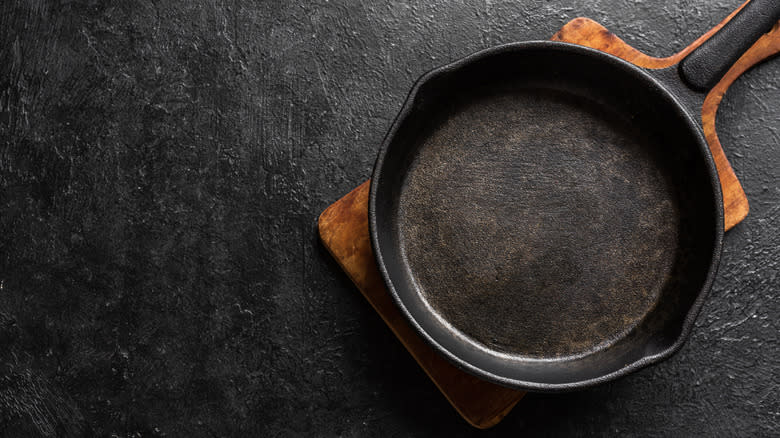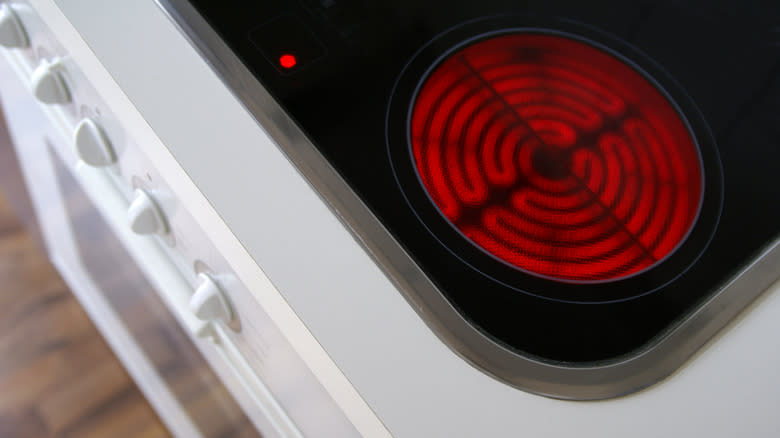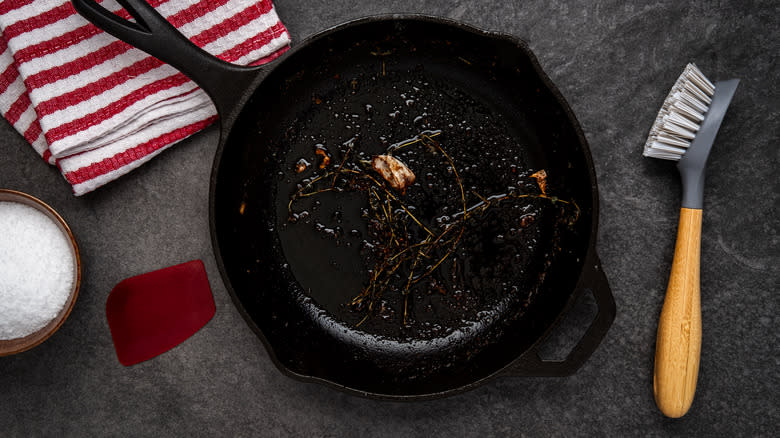Can You Use A Cast Iron Skillet On An Electric Stove?

Cast iron skillets can be intimidating to cook with because they're often perceived as being high maintenance (although much of what you've heard is probably a myth). But these durable pans are actually incredibly versatile parts of your kitchen arsenal. For example, they can be used on gas ranges, induction cooktops, and, yes, even electric stoves.
Home cooks often question whether you can use a cast iron skillet on an electric stove since heavy cast iron on a delicate glass stovetop sounds like a recipe for disaster. But you can successfully cook with cast iron on an electric cooktop and, in fact, this medium provides a few benefits over other stoves.
For one, the flame on a gas stove can flicker and cause uneven heat distribution. With an electric cooktop, each designated spot will maintain an even temperature without any hot spots. Electric stovetops are also known for being notoriously slow to heat. This is a plus when using cast iron, though, since it will slowly bring the entire area of the pan to temperature at the same time.
Read more: 11 Tips For Keeping Your Grill Shiny And Clean
Tips To Remember When Going Electric

There are a few other tips to keep in mind when cooking with cast iron on an electric stovetop, and many of them have to do with the temperature. First, try your best to match the circumference of your pan with the circumference of the burner, otherwise you'll have a very hot middle with cool outer edges.
Because electric stovetops take a while to come to temperature, they also take a while to cool down or change temperature. Be aware of that when cooking and try to anticipate the heat required with micro-adjustments to the burner settings. Along those lines, avoid keeping the cast iron skillet over high heat for long periods. Overexposure to high heat can actually cause the skillet to crack or warp.
Finally, if you need to move the cast iron skillet at all, lift it and place it gently where you need it to be rather than sliding it. This will ensure your electric cooktop stays intact and scratch-free.
Cast Iron Care

No matter what cooktop you use, be sure to follow the cast iron skillet best practices, the first of which is seasoning. This step is essential for cast iron cookware as it creates a natural, non-stick surface and helps to prevent rusting. To season, coat the skillet with a thin layer of oil and bake it in the oven at a high temperature for an hour. You can repeat this process periodically to maintain the seasoning.
You may have heard you should avoid using soap when cleaning your cast iron skillet, the thinking being it could eat away at the seasoning. However, it's perfectly fine to use a little of mild dish soap when washing your skillet with hot water. If you need to scrub, use a gentle brush or sponge or even coarse sea salt as an abrasive. Dry the skillet thoroughly after cleaning to prevent rust.
Once cleaned and seasoned, store your cast iron skillet in a dry place to prevent moisture buildup, which can also contribute to rust. You can place a paper towel or cloth between stacked skillets to avoid scratching.
Read the original article on Daily Meal


